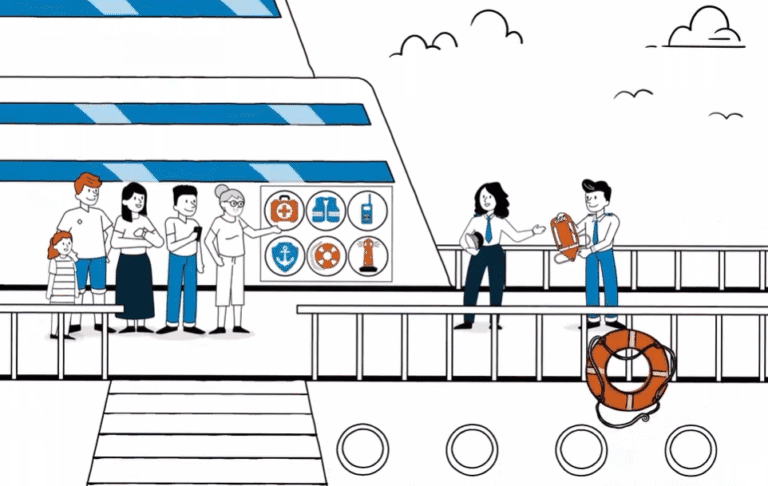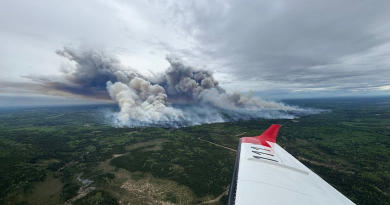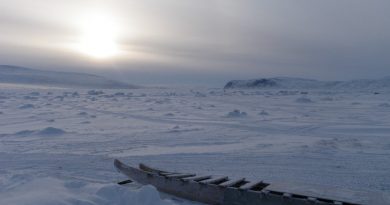New video aims to improve passenger safety during Arctic cruise emergencies

As Arctic cruises become increasingly popular, a new video has just been released to help passengers stay safe during maritime emergencies.
The video walks viewers through the key steps of what to do if things go wrong—covering everything from how passengers should react when they hear the emergency alarm to what they can expect while boarding lifeboats or being transferred to rescue vessels.
“The aim of this video is simple: to turn uncertainty into understanding,” Benjamin Strong, a U.S. Coast Guard member and the chair of the Arctic Council’s Emergency Prevention, Preparedness and Response (EPPR) Working Group.
“If passengers know what to expect and how to act, they become part of the solution during an emergency.”
Facilitating retention to reduce response times
Arctic cruises have become increasingly popular over the last decade.
While most cruise operators provide safety briefings at the start of each voyage, a recent exercise by the ARCSAR project—an international initiative, including Canada, that focuses on improving Arctic search and rescue—found that many passengers do not retain evacuation information beyond the initial briefing.

The exercise revealed this caused a ripple effect resulting in delays during emergencies and hindering response times.
To help address this, the Joint Rescue Coordination Centre Norway (JRCC N), the U.S. Coast Guard and the Association of Arctic Expedition and Cruise Operators (AECO), developed a video to speak directly to passengers.
They say they focused on creating a video as simple as possible to make sure the information could be easily retained.
Topics covered in the Arctic cruise safety video:
- what to do when the alarm rings
- what to expect in lifeboats or life rafts
- transferring to a rescue vessel
- after you’ve been rescued
The video animation takes place against a white board background, walking passengers through what a real-life rescue might be like, something they hope will help passengers work more smoothly with Arctic rescue teams and cruise staff.
“In a mass rescue operation, time and efficiency are critical,” Tore Hongset, SAR coordinator, JRCC Norway.said in a statement. “When evacuees understand the process better and stay calm, we can respond faster, safer, and with better outcomes.”
“This video will contribute to passengers’ understanding of the operation.”
The video project is mainly aimed at expedition cruises, which usually carry fewer than 200 passengers.
Unique environment, unique safety needs
Although Arctic cruise ships are part of an established industry, the region itself presents unique challenges. It’s sparsely populated, with search and rescue teams, medical facilities, and other support resources often located hours away from where the ships operate.
Developing the video was key to preparing passengers for these conditions and helping them feel more confident and informed in the event of an emergency, AECO said.

Those behind the project plan for the video to be sent to passengers before their trip, as well as being shown at muster stations, living areas of the ship, and during safety drills.
“By collaborating on this project, we’re helping the guests of our member operators feel more prepared and confident, ultimately contributing to safer, smoother experiences for everyone involved,” Frigg Jørgensen, Executive Director, AECO, said.
“Collaboration with industry is a key for these types of projects, and we have an excellent position to facilitate this connection in a meaningful manner.”
The video project was developed by the Arctic Council’s Emergency Prevention, Preparedness, and Response Working Group (EPPR) in collaboration with the Association of Arctic Expedition Cruise Operators (AECO),
The project was funded by the Norwegian Coastal Administration.
Comments, tips or story ideas? Contact Eilís at eilis.quinn(at)cbc.ca
Related stories from around the North:
Canada: Arctic Canadian community plans $100 tax per passenger for cruise ships this season, CBC News
Greenland: Inuit work towards greater voice in shipping as IMO meeting gets underway, Eye on the Arctic
Norway: Cruise ship season begins at Svalbard, The Independent Barents Observer
Russia: Old icebreakers eye upgrades for Murmansk-Vladivostok tourism, The Independent Barents Observer
United States: Cruise ship-free Saturdays would ease tourism burden, say some in Juneau, Alaska, The Associated Press



